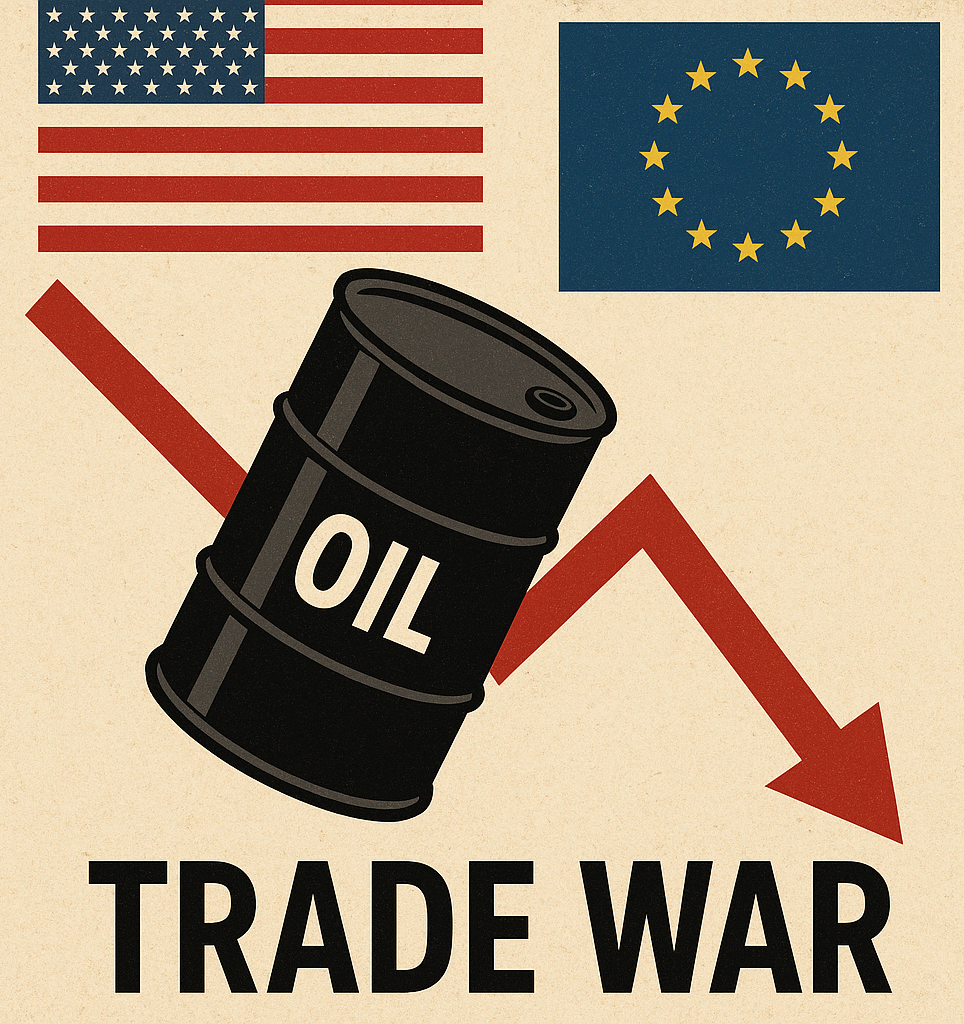
Summary
Oil prices declined for a third consecutive session on July 22, 2025, as escalating trade tensions between the United States and the European Union weighed on investor sentiment and clouded the outlook for global fuel demand. Markets grew increasingly concerned about the potential economic fallout if proposed tariffs and retaliation materialize, leading to risk aversion and pricing pressure across energy markets.
Recent Performance and Key Numbers
- Brent crude fell by approximately 0.75% ($68.69 per barrel at 03:25 GMT).
- U.S. West Texas Intermediate (WTI) decreased by 0.76% ($66.69 per barrel). The actively traded September WTI contract slipped to $65.41, down 0.82%.
- Both benchmarks had closed lower in previous sessions, marking three straight days of declines.
| Contract | Price (July 22) | Change |
|---|---|---|
| Brent Crude | $68.69/bbl | -0.75% |
| WTI (August Expiry) | $66.69/bbl | -0.76% |
| WTI (September) | $65.41/bbl | -0.82% |
Drivers Behind the Decline
1. U.S.-EU Trade Tension Escalation
- The U.S. administration has threatened a 30% tariff on EU imports effective August 1 if a trade deal isn’t reached.
- EU officials are considering a broad set of potential counter-measures as prospects for an agreement fade.
- The looming tariff deadlines and threat of retaliation have increased fears that global economic growth could slow, dampening demand for oil.
2. Demand Concerns
- Analysts warn that higher trade barriers could curb economic activity and reduce fuel consumption in major crude-consuming regions—the U.S. and Europe.
- Persistent worries about a slowdown in global growth continue to be the dominant narrative in oil markets.
3. Supply Factors

- Previous supply-side risks eased after the June 24 ceasefire between Israel and Iran, reducing the threat of Middle East disruptions.
- Major oil producers have raised output, loosening market conditions. OPEC and its allies are unwinding voluntary production cuts, and Saudi Arabia’s May exports reached a three-month high.
4. Other Market Forces

- A weaker U.S. dollar provided some limited support, as crude becomes more affordable in other currencies, but this was overshadowed by trade war fears.
- Recent EU sanctions on Russian oil have had scant impact on global supply, doing little to bolster prices in the current environment of demand anxiety.
Analyst and Market Commentary
“Ongoing concerns about demand remain prevalent amid rising global trade tensions, particularly as markets monitor the latest tariff threats from major economies and anticipate potential announcements from Trump before the August 1 deadline.”
— Senior market analyst at Phillip Nova
“Prices have slipped as trade war concerns offset the support by a softer (U.S. dollar).”
— IG market analyst Tony Sycamore
“With global economic uncertainty rising, oil prices may continue to feel downward pressure.”
— Angel One Markets commentary
Outlook for Oil Markets
- Bearish sentiment prevails as investors anticipate further tariff announcements, OPEC+ output increases, and lackluster demand forecasts.
- Key market catalysts in the coming days include:
Conclusion
Oil prices have extended their slide for a third consecutive session as the threat of a U.S.-EU trade war stirs deep concerns about global economic prospects and fuel demand. While supply risks have receded and the dollar’s weakness has only partly cushioned the fall, the prevailing mood in oil markets remains cautious. Unless a breakthrough emerges to ease trade tensions or economic indicators improve, the risk of sustained downward pressure on crude prices is likely to persist.


Leave a Reply